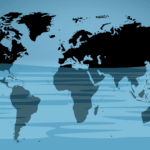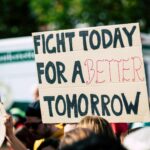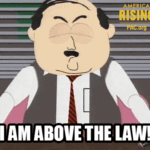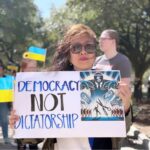Fighting for the rights of others is a powerful act of solidarity and justice that seeks to protect and uplift marginalized and vulnerable communities. It involves advocating for equality, challenging discrimination, and ensuring that every individual’s fundamental freedoms are respected and upheld. This commitment not only strengthens social cohesion but also promotes a more inclusive and fair society where everyone can thrive.
The History of Advocacy: Fighting for the Rights of Marginalized Communities
Fighting for the rights of others is no new phenomenon; in fact, it’s been a rollercoaster ride through history, complete with dramatic highs, frustrating lows, and the occasional plot twist that makes you want to throw your hands up and say, “Really? Again?” Advocacy, at its core, is about standing up for those who have been pushed to the sidelines, ignored, or downright trampled on by society’s less-than-stellar decisions. From the earliest days of civilization, people have been rallying together to demand fairness, justice, and sometimes just a little bit of common decency.
If you think advocacy is a modern invention, think again. Ancient civilizations had their own versions of “protest,” though instead of hashtags and viral videos, they had scrolls, speeches, and probably a lot of shouting in town squares. Take, for example, the early advocates for women’s rights in ancient Greece and Rome, who, despite living in societies that treated women like decorative objects, still found ways to push back. It wasn’t exactly a walk in the park—more like a marathon uphill in flip-flops—but their efforts laid the groundwork for future generations. Fast forward a few centuries, and you’ll find the abolitionists in the 18th and 19th centuries, who were basically the original “cancel culture” but for slavery. They risked everything to fight an institution that was as entrenched as your grandma’s fruitcake recipe, and their persistence eventually helped bring about monumental change.
Of course, advocacy isn’t just about grand gestures and historical milestones; it’s also about the everyday heroes who refuse to accept the status quo. Marginalized communities have often been the ones leading the charge, even when the odds were stacked against them like a game of Jenga played by a toddler. The civil rights movement in the United States is a prime example, where ordinary people—armed with nothing but courage, determination, and sometimes a really good pair of walking shoes—challenged systemic racism and segregation. Their protests, sit-ins, and speeches weren’t just about changing laws; they were about changing hearts and minds, which, as anyone who’s tried to convince a cat to take a bath knows, is no easy feat.
What’s fascinating is how advocacy has evolved over time, adapting to new challenges and technologies. In the past, getting your message out meant printing pamphlets or shouting from soapboxes. Today, it’s about viral tweets, Instagram stories, and TikTok dances that somehow manage to be both entertaining and enlightening. This digital age has democratized advocacy, allowing voices that were once muffled or ignored to be heard loud and clear. However, it also means that advocates have to be savvy enough to cut through the noise—because let’s face it, there’s a lot of noise out there, from cat memes to conspiracy theories about lizard people.
Despite the changes in tactics and tools, the heart of advocacy remains the same: a relentless commitment to justice and equality. It’s about recognizing that marginalized communities deserve more than just lip service—they deserve real, tangible change. And while the journey is often long and winding, filled with setbacks and moments that make you want to throw your hands up in exasperation, it’s also filled with victories that remind us why the fight is worth it. So, whether you’re marching in the streets, signing a petition, or just sharing a powerful story online, remember that you’re part of a long and storied tradition of people who refused to stay silent. Because when it comes to fighting for the rights of others, silence is definitely not golden—it’s just plain old boring.
How to Become an Effective Ally in Social Justice Movements
Fighting for the rights of others is a noble pursuit, but becoming an effective ally in social justice movements isn’t as simple as just showing up with a “Free Hugs” sign and a smile. If you want to truly make a difference—and avoid accidentally becoming that person who “means well” but ends up doing more harm than good—there are a few things you should keep in mind. First off, listen. Yes, it sounds basic, but you’d be surprised how many people think being an ally means talking a lot. Spoiler alert: it doesn’t. Being an effective ally means putting your own voice on mute and amplifying the voices of those who are directly affected. Think of yourself as a human megaphone, not a karaoke star. This means reading, learning, and most importantly, listening to the experiences of marginalized communities without interrupting or offering your own “helpful” anecdotes. Trust me, your story about that one time you felt slightly uncomfortable at a party is not the hill to die on here.

Next, educate yourself. No one expects you to become an overnight expert on every social justice issue, but doing your homework shows respect and commitment. Instead of waiting for someone to explain things to you (which can be exhausting for those on the front lines), take the initiative to read books, watch documentaries, and follow activists on social media. Bonus points if you can do this without turning it into a “look at me, I’m woke” Instagram post. Remember, allyship is about supporting others, not collecting social justice badges like they’re Pokémon cards.
Now, let’s talk about action. Being an ally isn’t just about nodding along in solidarity or sharing a heartfelt tweet once in a blue moon. It’s about showing up consistently, whether that means attending protests, signing petitions, donating to causes, or even just calling out problematic behavior when you see it—yes, even when it’s your uncle at Thanksgiving. And if you’re worried about saying the wrong thing, don’t let that stop you. Mistakes will happen; the key is to own them, apologize sincerely, and learn from them. Think of it as social justice improv: sometimes you’ll stumble, but the show must go on.
Another crucial aspect is recognizing your own privilege. This can be uncomfortable, like realizing you’ve been wearing mismatched socks all day, but it’s necessary. Privilege isn’t about guilt; it’s about awareness and using whatever advantages you have to help level the playing field. For example, if you have a platform—whether it’s a big social media following or just a loud voice in your friend group—use it to highlight issues and support marginalized voices. If you don’t have a platform, that’s okay too. Sometimes the most powerful thing you can do is listen, learn, and show up in the ways that you can.
Finally, remember that allyship is a marathon, not a sprint. It’s not about grand gestures or one-time heroics; it’s about consistent, humble commitment. You won’t become a perfect ally overnight, and that’s perfectly fine. The important thing is to keep trying, keep learning, and keep standing up for others—even when it’s hard, awkward, or inconvenient. Because at the end of the day, fighting for the rights of others isn’t just about making the world better for them; it’s about making it better for all of us. And if you can do that with a little humor and humility along the way, well, you’re already ahead of the game.
Legal Battles That Changed the Course of Human Rights Worldwide
When it comes to fighting for the rights of others, legal battles have often been the unsung heroes of social progress—think of them as the courtroom equivalent of a superhero origin story, minus the capes but with plenty of dramatic flair. These landmark cases didn’t just shuffle papers or argue over technicalities; they changed the very fabric of human rights worldwide, proving that sometimes, the pen (or the gavel) really is mightier than the sword. Take, for instance, the famous Brown v. Board of Education case in the United States. Before this legal showdown, segregation in schools was as common as bad coffee at a Monday morning meeting. But thanks to a group of determined plaintiffs and some sharp legal minds, the Supreme Court declared that “separate but equal” was about as equal as a cat and a dog sharing a bed—meaning, not equal at all. This ruling didn’t just desegregate schools; it sent a powerful message that discrimination, no matter how deeply entrenched, could be challenged and overturned. It was like the legal system finally got a wake-up call, and the rest of the world took notice.
Moving across the pond, the European Court of Human Rights has also played a starring role in shaping human rights. One memorable case involved a man who wanted to marry his pet parrot. Okay, maybe not that extreme, but the court has tackled some pretty quirky and complex issues that highlight the evolving nature of rights in modern society. From freedom of expression to privacy concerns, these cases remind us that human rights aren’t static—they’re more like a dance, constantly adapting to new rhythms and challenges. And speaking of adapting, the landmark case of Obergefell v. Hodges in the U.S. deserves a shout-out for legalizing same-sex marriage nationwide. This wasn’t just a win for lovebirds everywhere; it was a testament to how persistence in the legal arena can dismantle centuries-old prejudices. The ruling was like a giant “You may now kiss the bride” moment for equality, proving that sometimes, the courtroom can be the ultimate romantic setting.
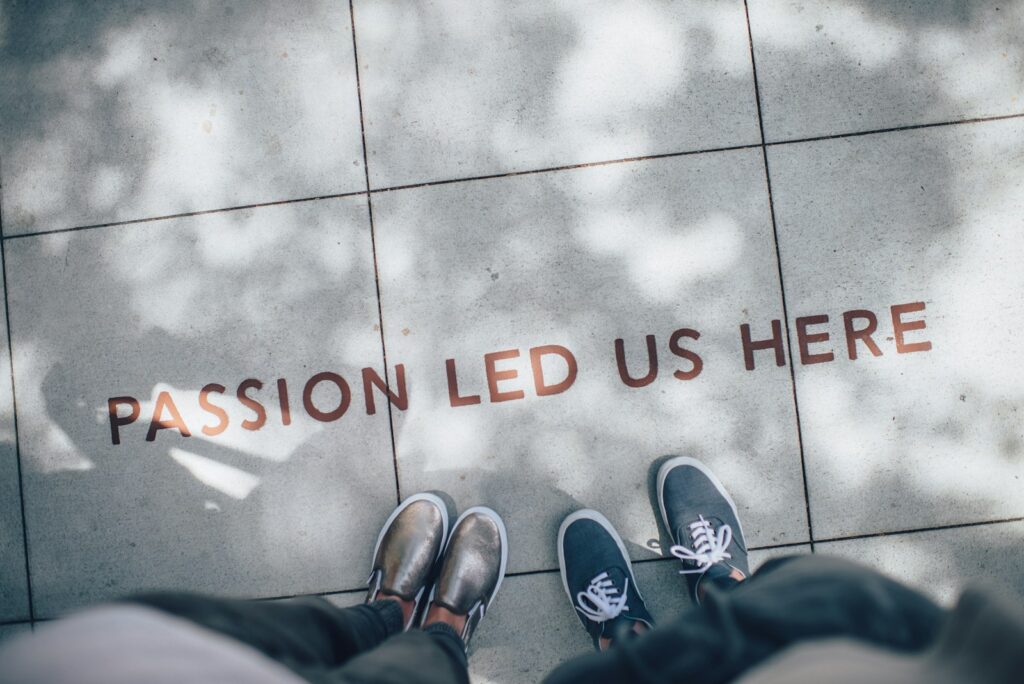
Of course, not all legal battles are as glamorous or headline-grabbing, but their impact is no less significant. Consider the case of the South African Constitutional Court’s decision to abolish apartheid laws. This was a heavyweight bout against institutionalized racism, and the victory was a seismic shift not only for South Africa but for human rights advocates worldwide. It showed that even the most entrenched systems of oppression could be toppled with courage, strategy, and a bit of legal wizardry. Meanwhile, in India, the decriminalization of homosexuality through the Navtej Singh Johar case was another milestone that sent ripples across the globe. It was a reminder that legal battles often reflect broader societal changes and can accelerate progress in ways that protests and petitions alone sometimes cannot.
What ties all these cases together is the undeniable truth that fighting for the rights of others is rarely a walk in the park—it’s more like a marathon through a legal jungle gym. Yet, these battles underscore the power of law as a tool for justice, equality, and sometimes, a bit of poetic irony. After all, who would have thought that dusty courtrooms could become arenas for some of the most thrilling and transformative fights for human dignity? So next time you hear about a legal case making headlines, remember: behind the legal jargon and procedural drama lies the potential to change lives and rewrite history. And if that’s not worth a little courtroom theatrics, what is?
Conclusion
Fighting for the rights of others is a vital act of solidarity and justice that promotes equality, protects vulnerable communities, and strengthens the fabric of society. It embodies empathy, courage, and a commitment to human dignity, ensuring that everyone’s voice is heard and respected. Through collective action and advocacy, defending the rights of others helps create a more inclusive and fair world for all.
